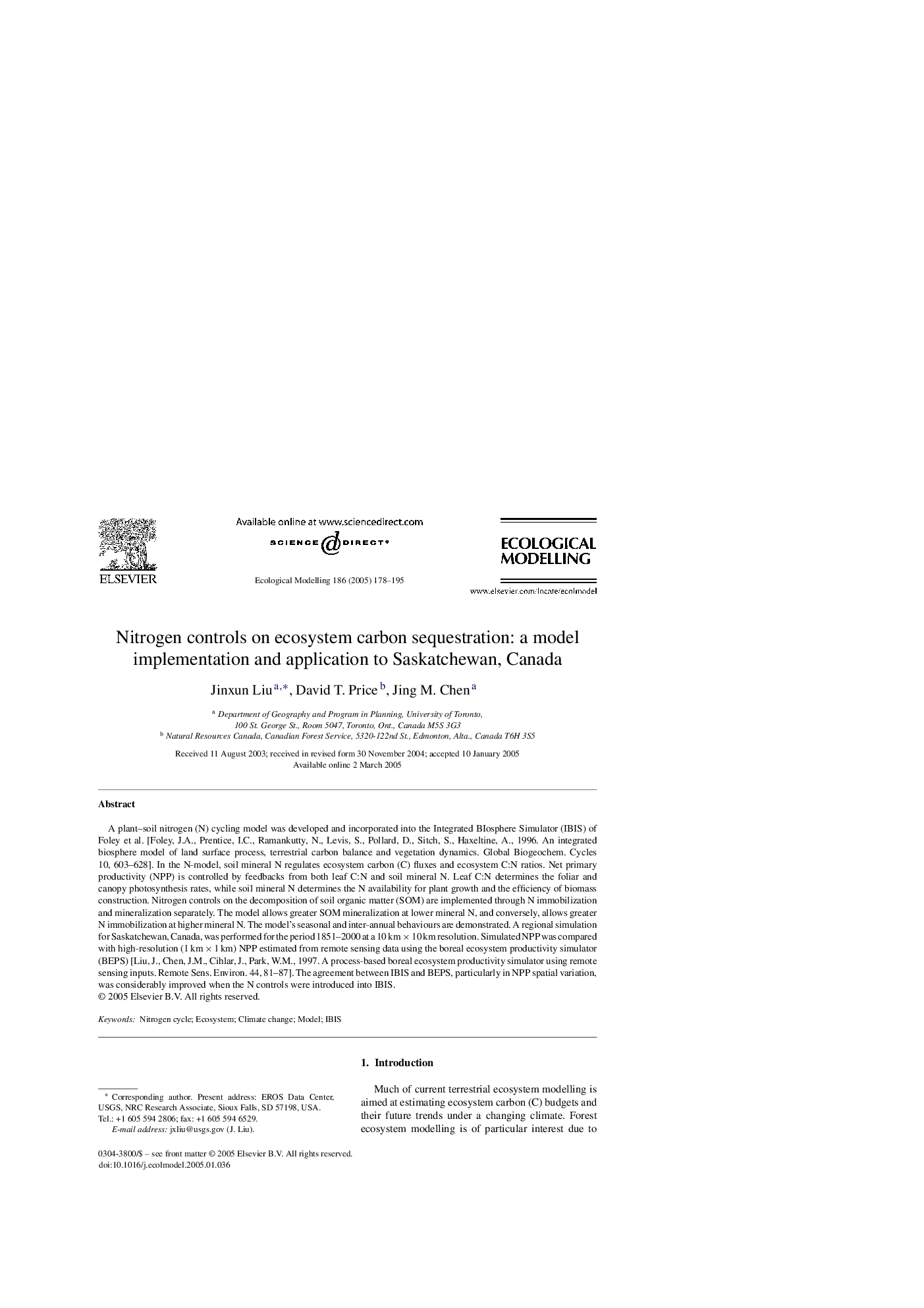| Article ID | Journal | Published Year | Pages | File Type |
|---|---|---|---|---|
| 9443442 | Ecological Modelling | 2005 | 18 Pages |
Abstract
A plant-soil nitrogen (N) cycling model was developed and incorporated into the Integrated BIosphere Simulator (IBIS) of Foley et al. [Foley, J.A., Prentice, I.C., Ramankutty, N., Levis, S., Pollard, D., Sitch, S., Haxeltine, A., 1996. An integrated biosphere model of land surface process, terrestrial carbon balance and vegetation dynamics. Global Biogeochem. Cycles 10, 603-628]. In the N-model, soil mineral N regulates ecosystem carbon (C) fluxes and ecosystem C:N ratios. Net primary productivity (NPP) is controlled by feedbacks from both leaf C:N and soil mineral N. Leaf C:N determines the foliar and canopy photosynthesis rates, while soil mineral N determines the N availability for plant growth and the efficiency of biomass construction. Nitrogen controls on the decomposition of soil organic matter (SOM) are implemented through N immobilization and mineralization separately. The model allows greater SOM mineralization at lower mineral N, and conversely, allows greater N immobilization at higher mineral N. The model's seasonal and inter-annual behaviours are demonstrated. A regional simulation for Saskatchewan, Canada, was performed for the period 1851-2000 at a 10 km Ã 10 km resolution. Simulated NPP was compared with high-resolution (1 km Ã 1 km) NPP estimated from remote sensing data using the boreal ecosystem productivity simulator (BEPS) [Liu, J., Chen, J.M., Cihlar, J., Park, W.M., 1997. A process-based boreal ecosystem productivity simulator using remote sensing inputs. Remote Sens. Environ. 44, 81-87]. The agreement between IBIS and BEPS, particularly in NPP spatial variation, was considerably improved when the N controls were introduced into IBIS.
Related Topics
Life Sciences
Agricultural and Biological Sciences
Ecology, Evolution, Behavior and Systematics
Authors
Jinxun Liu, David T. Price, Jing M. Chen,
